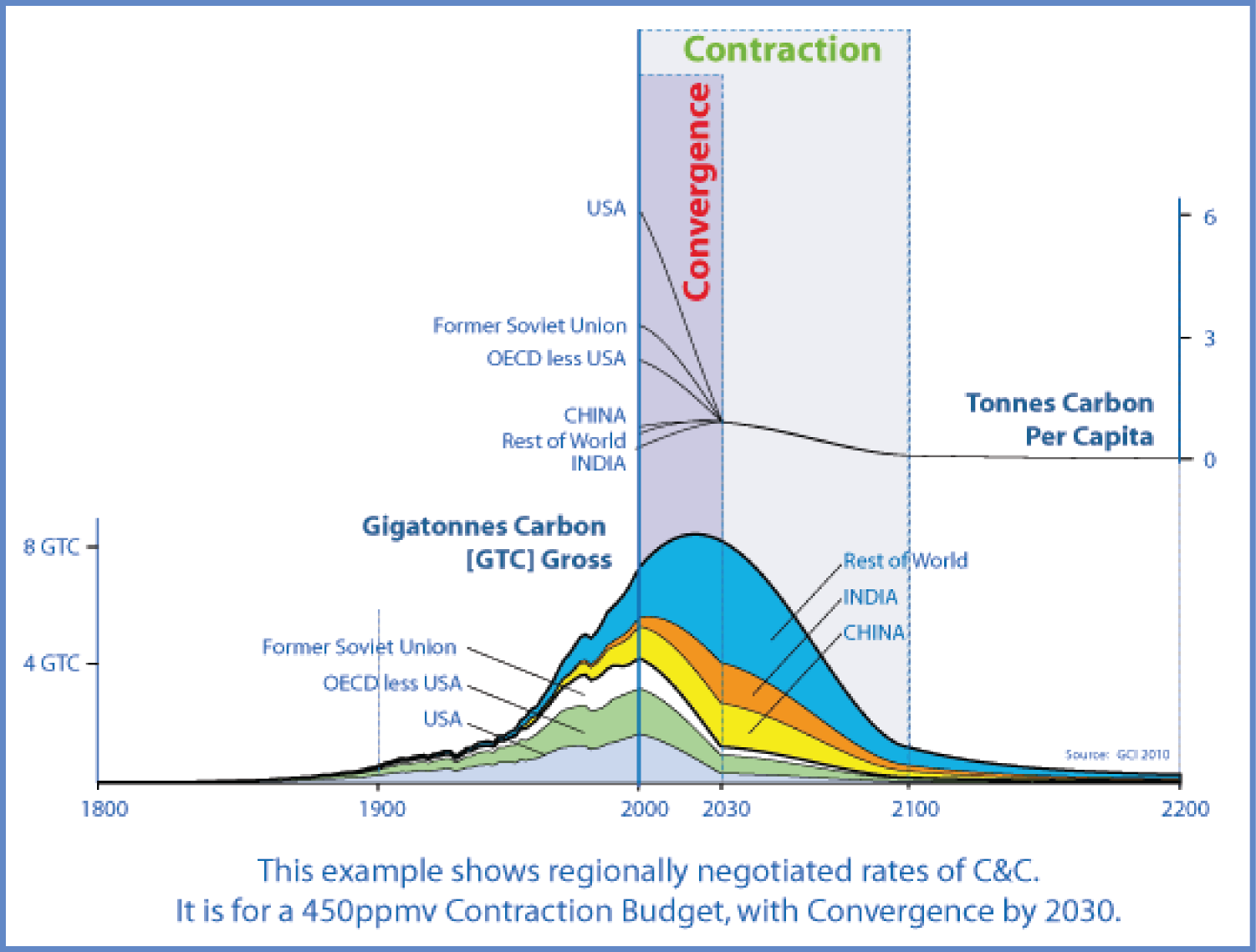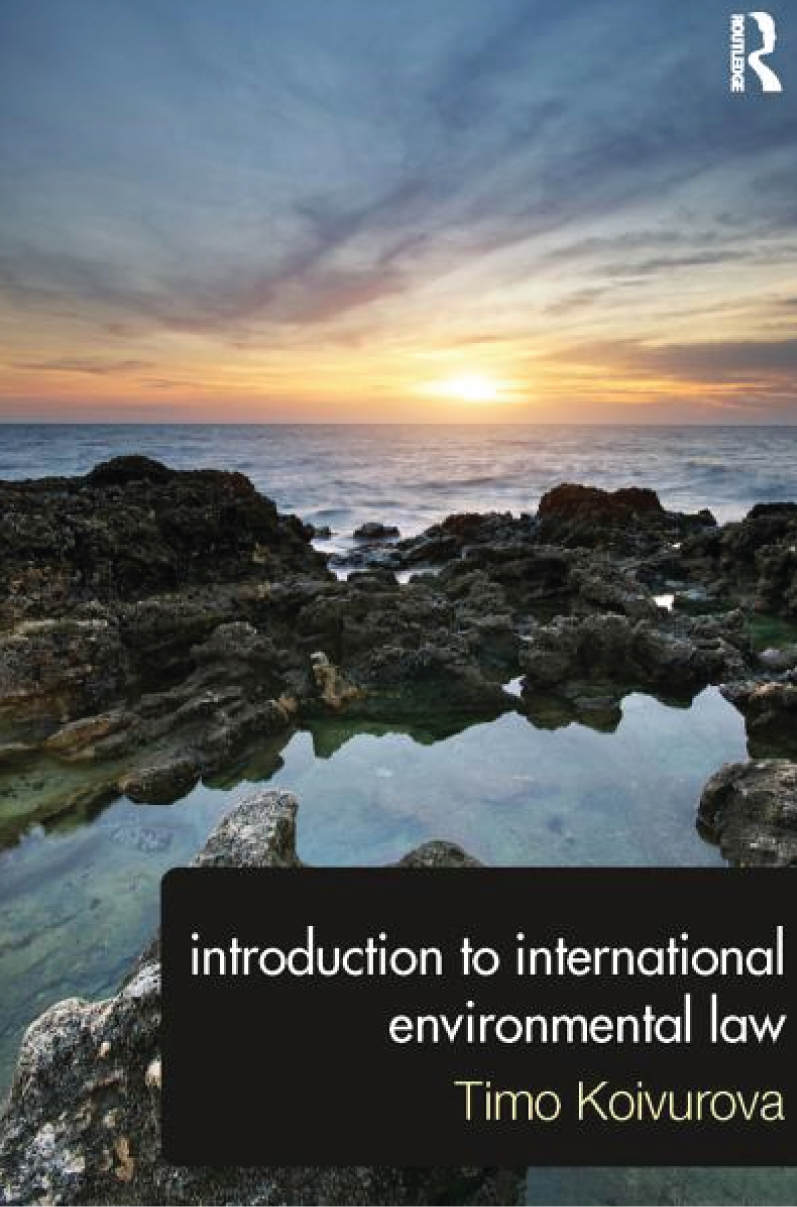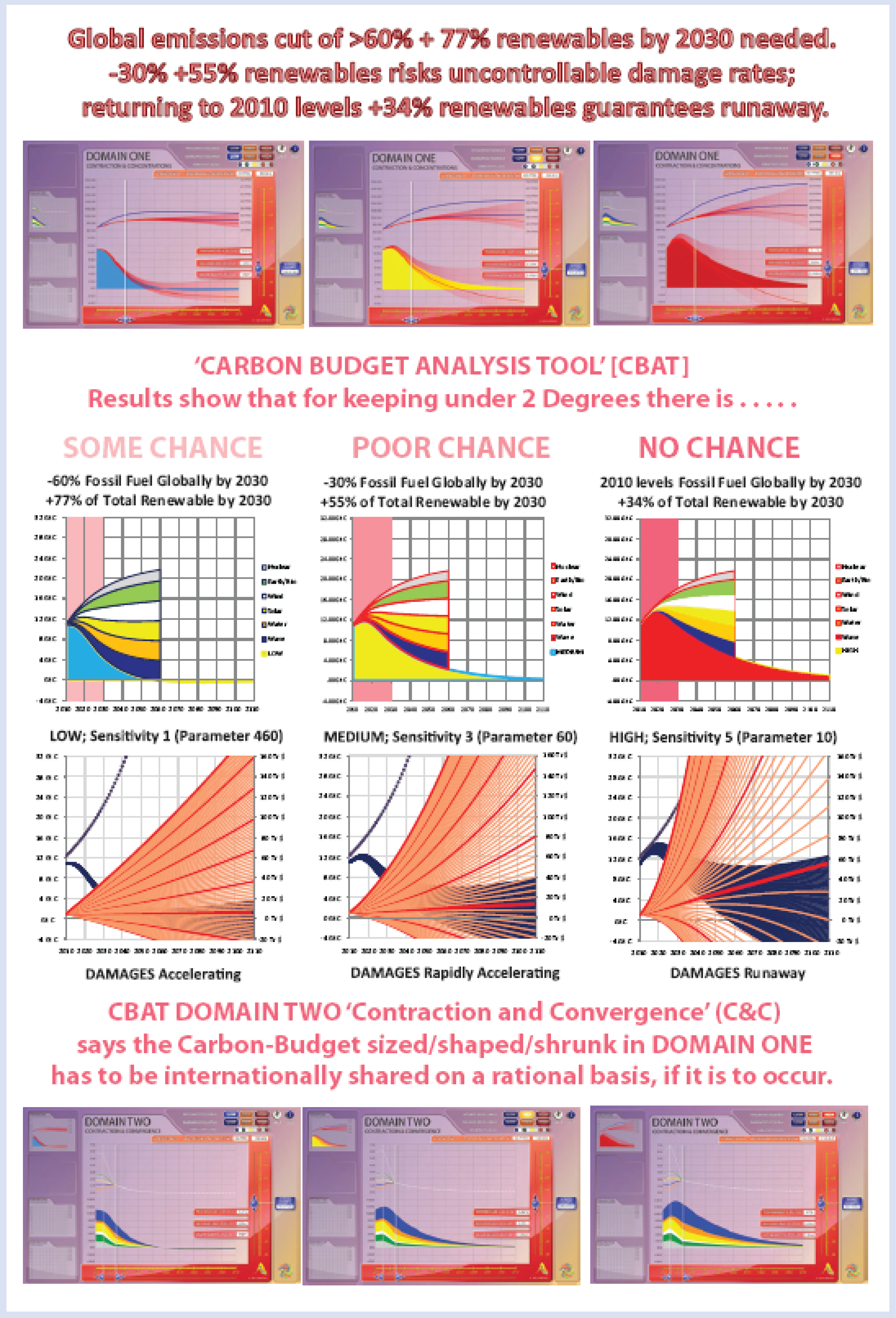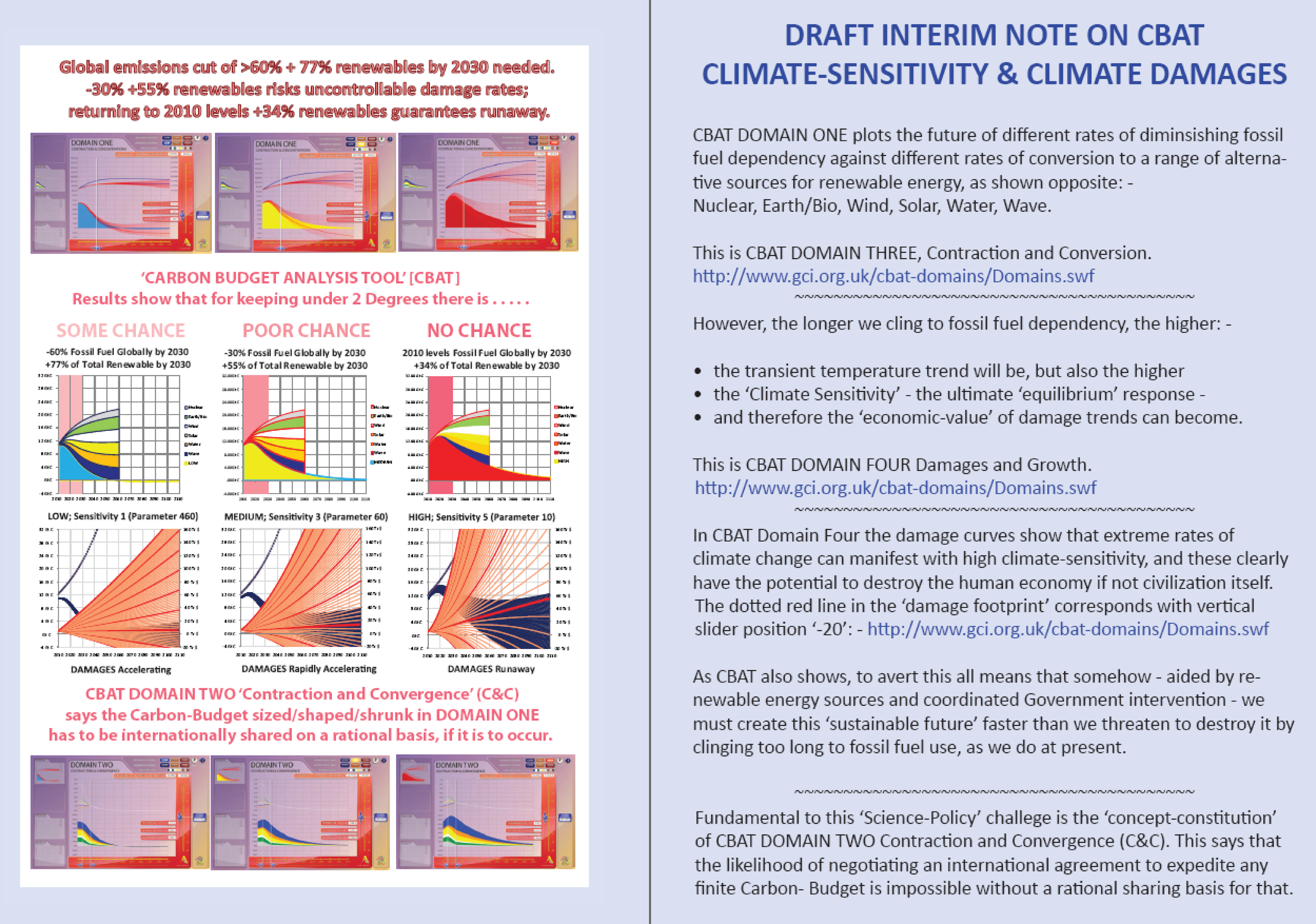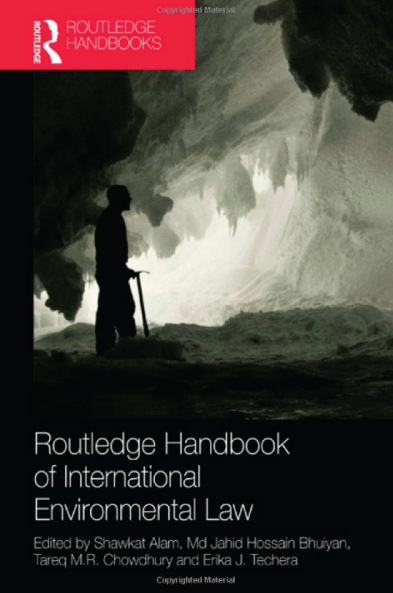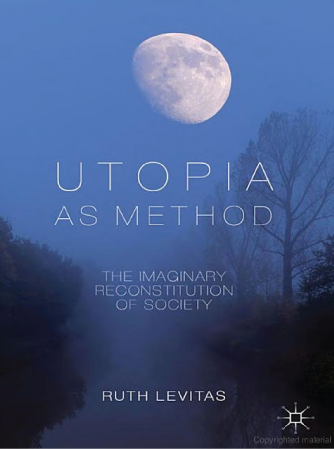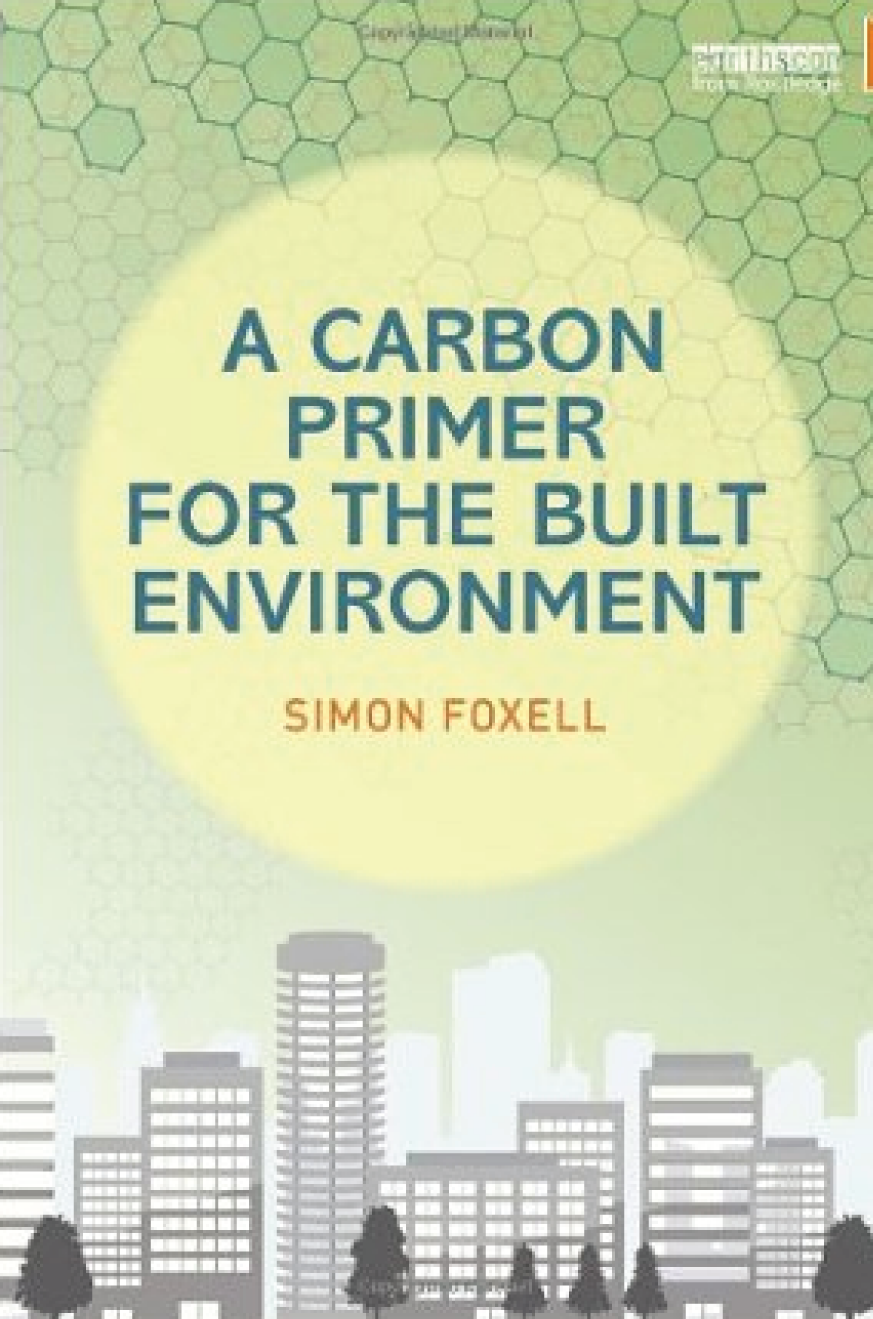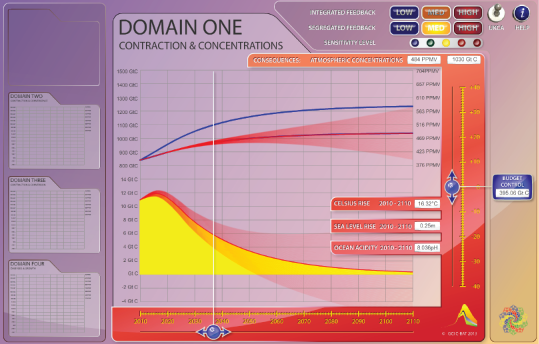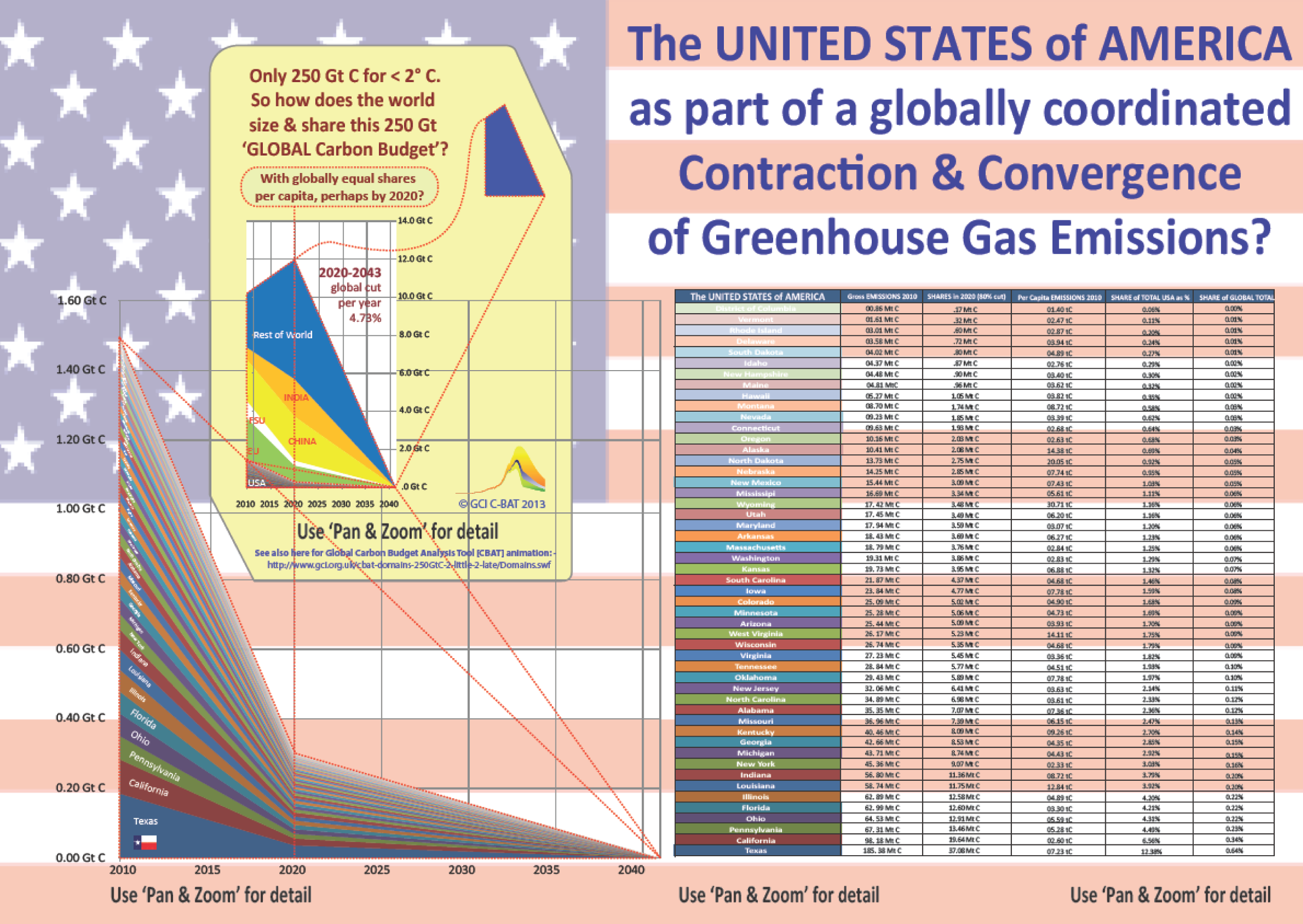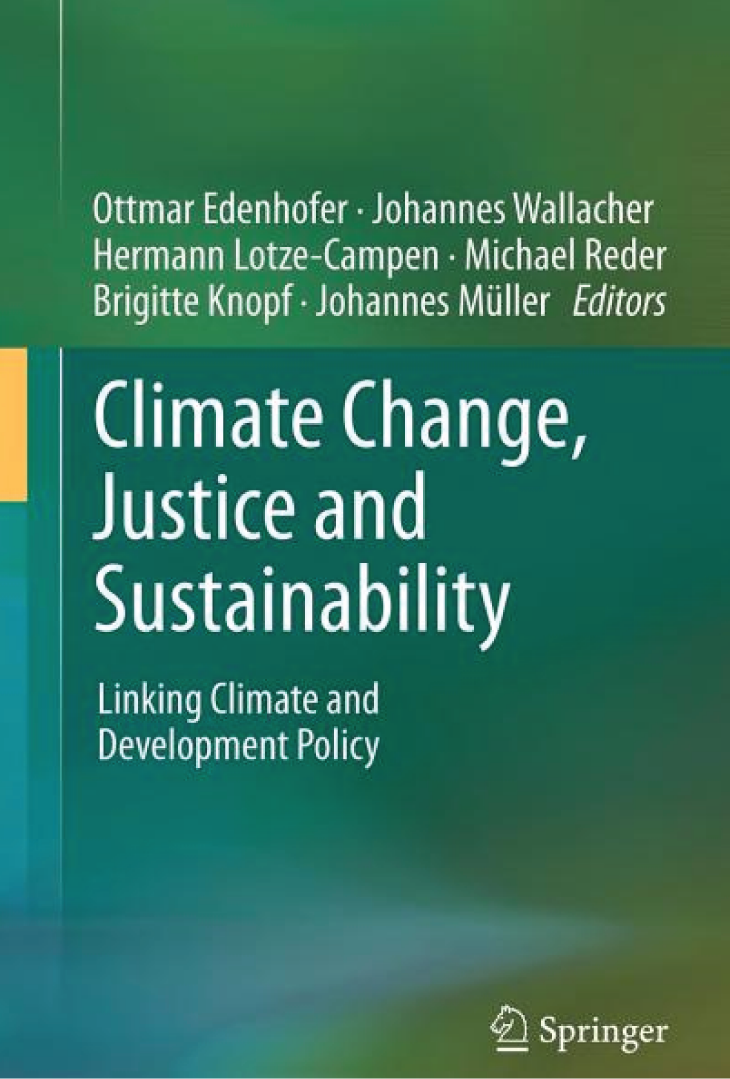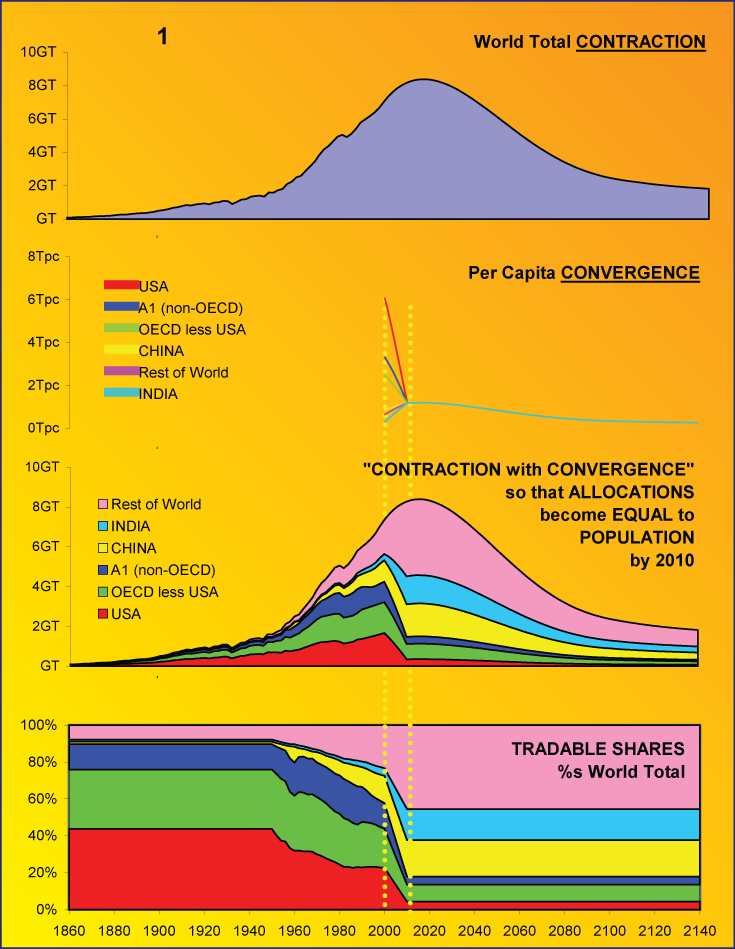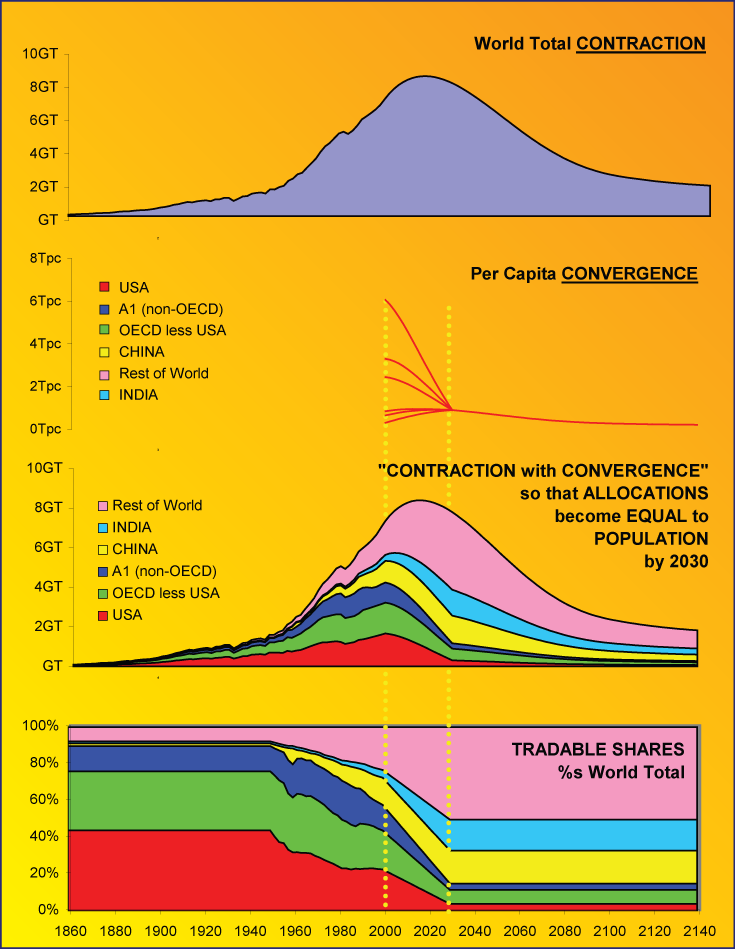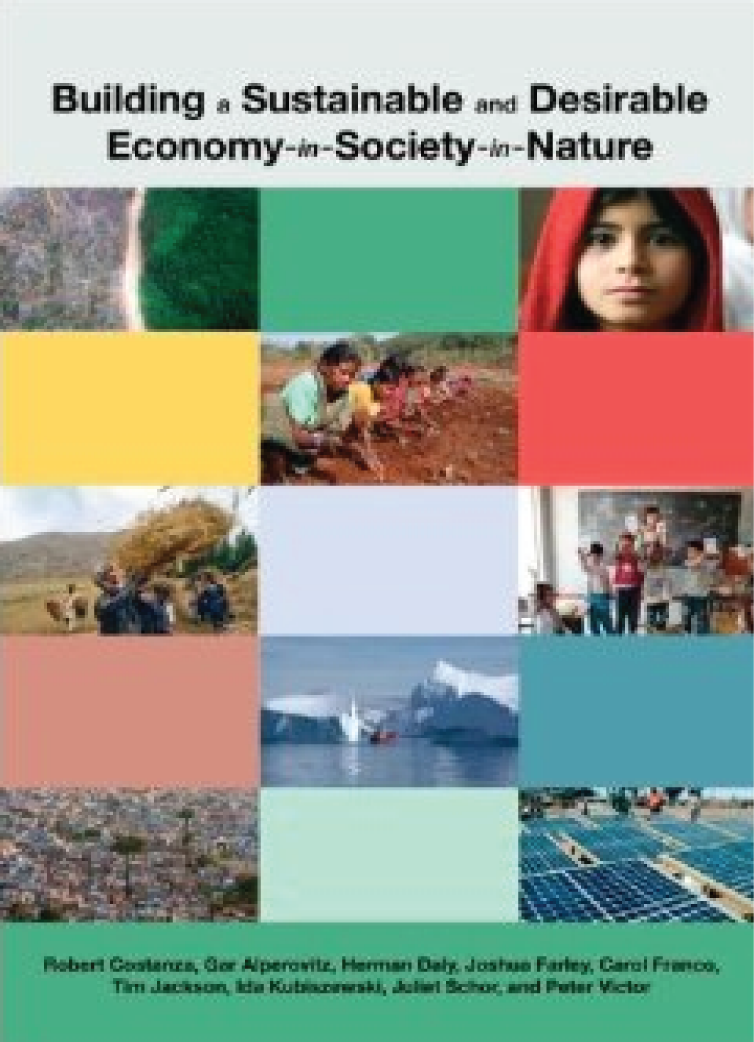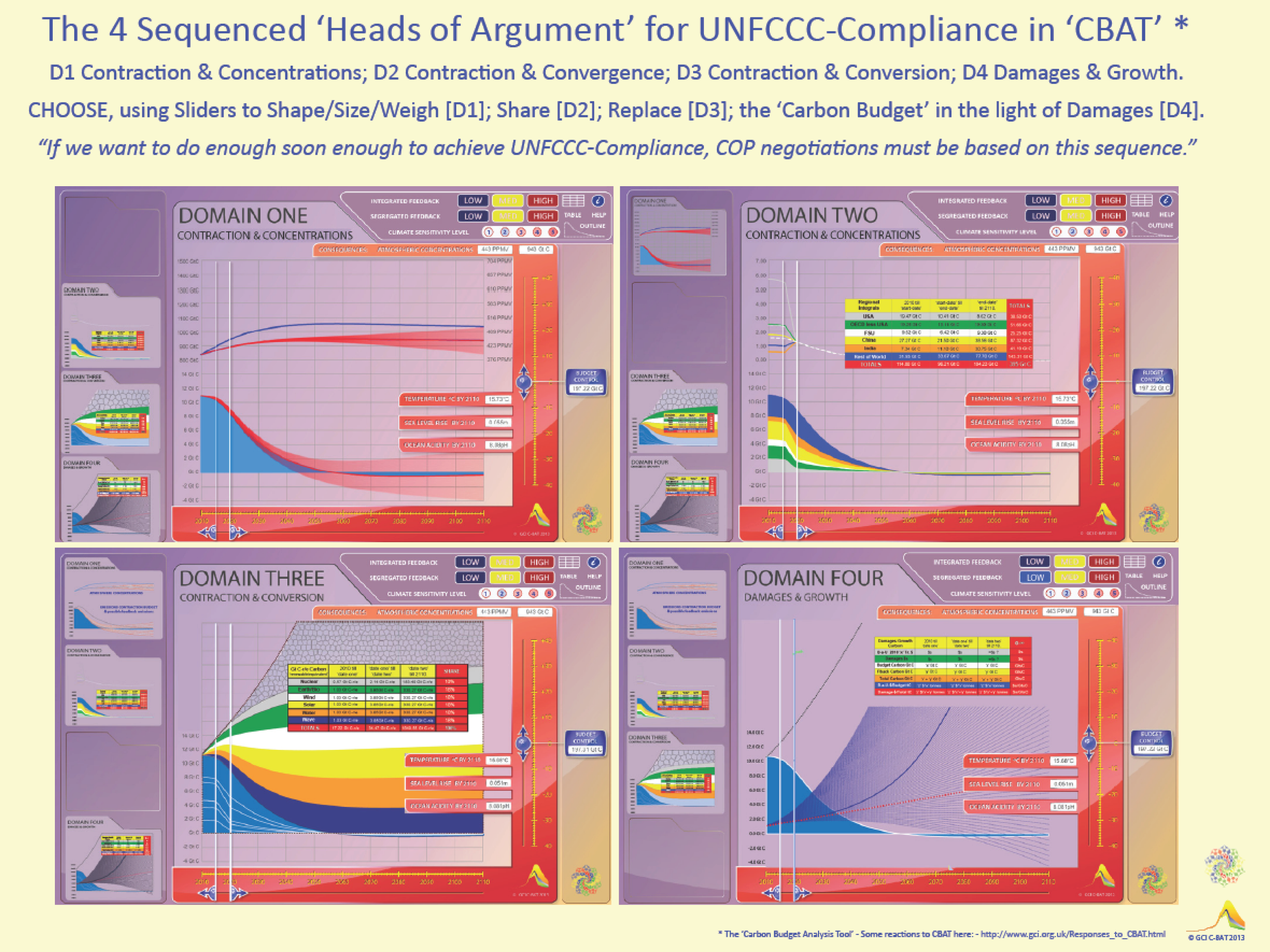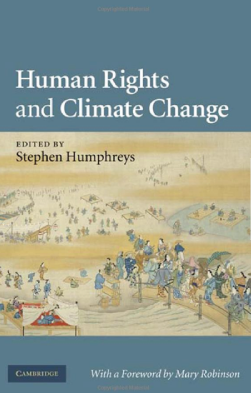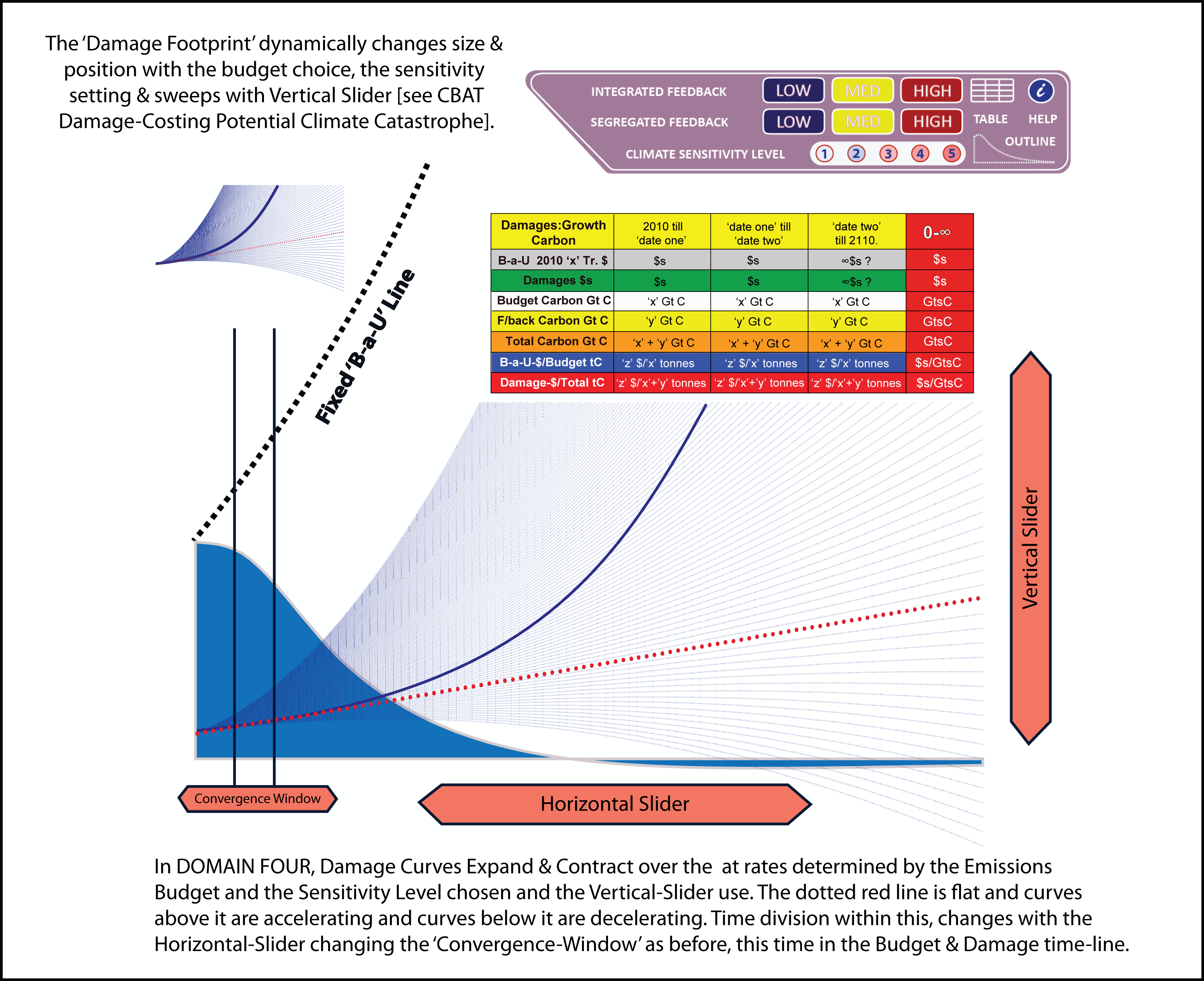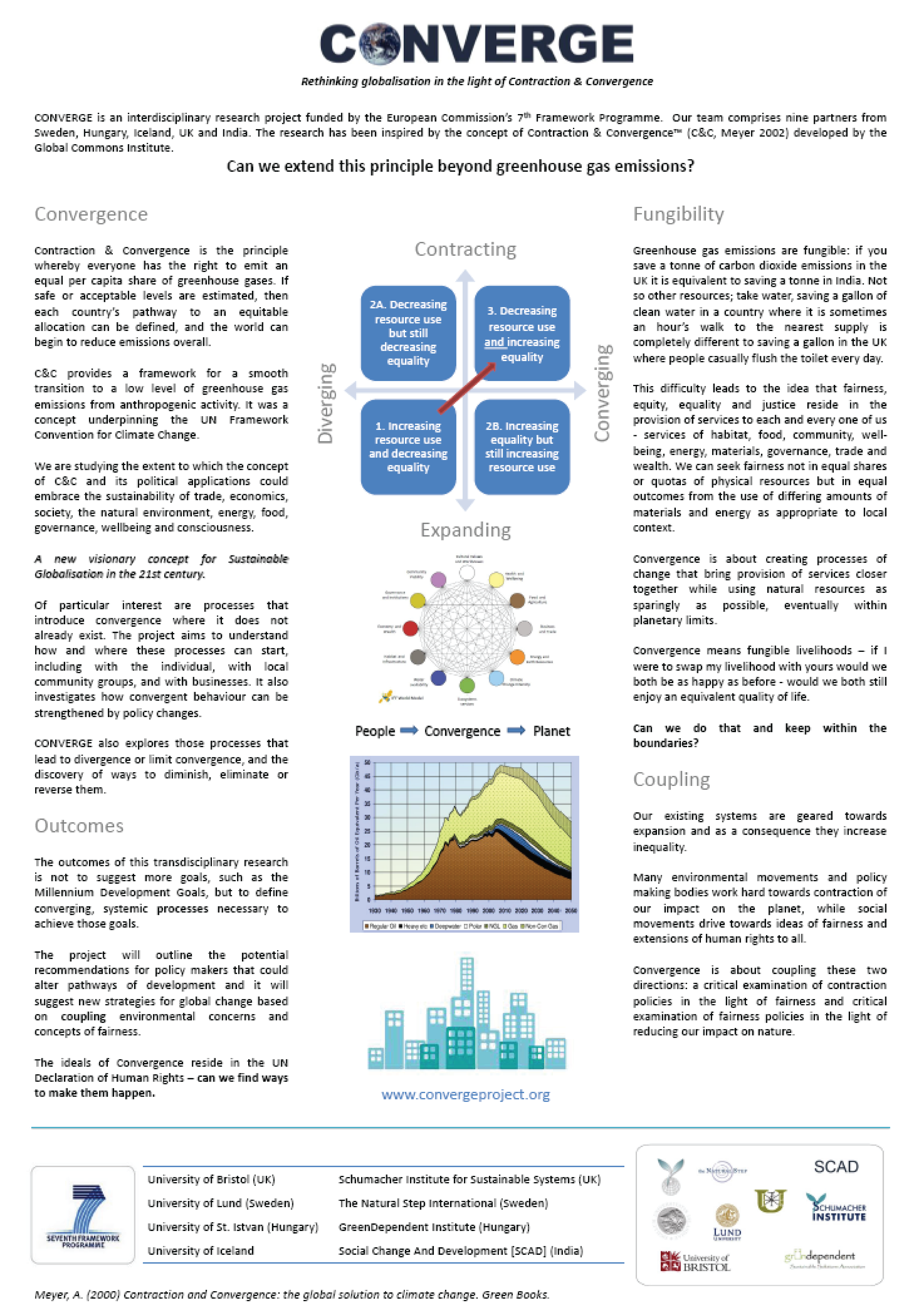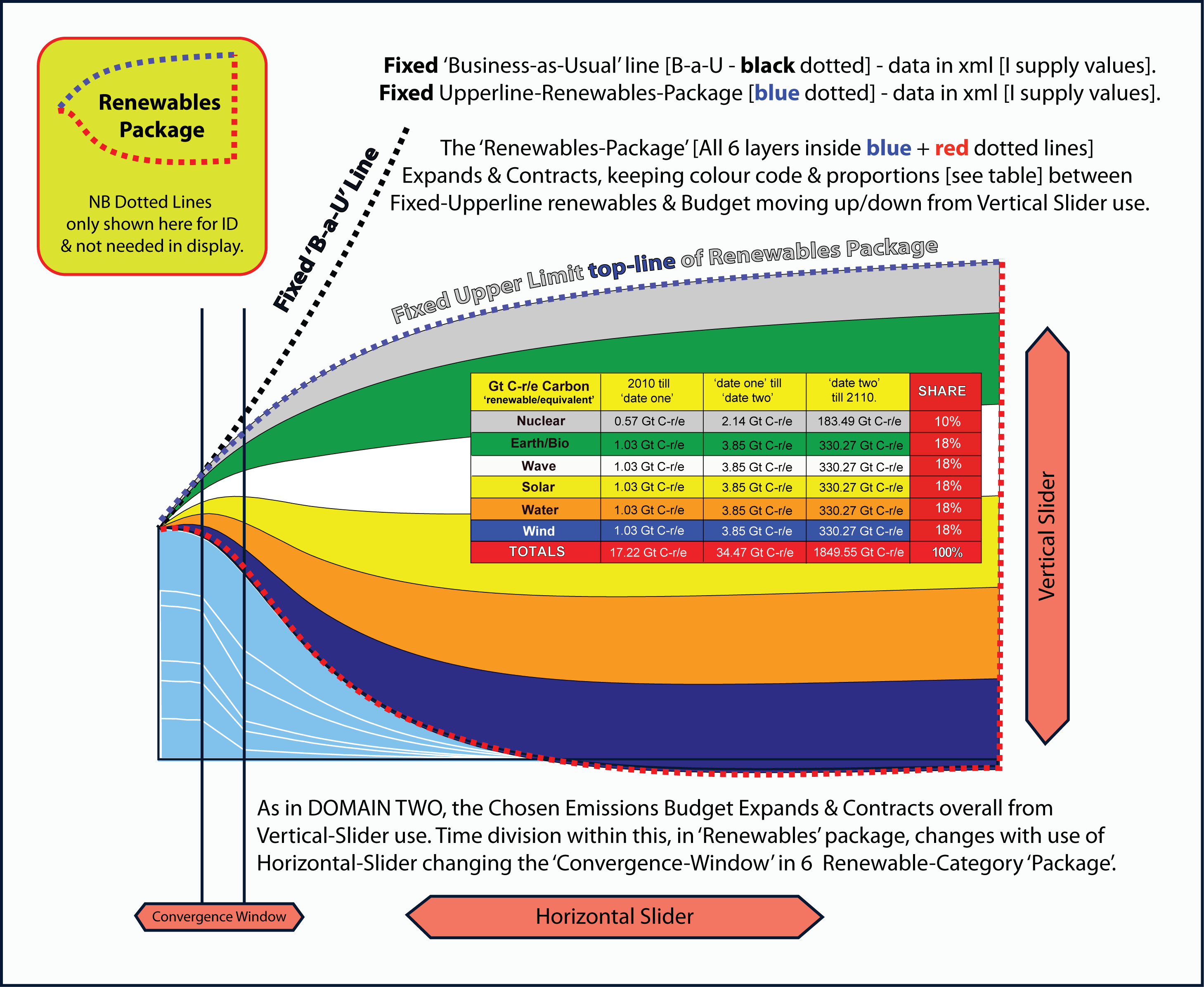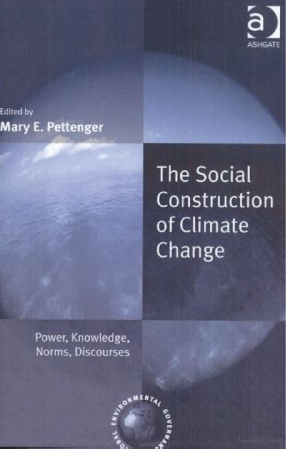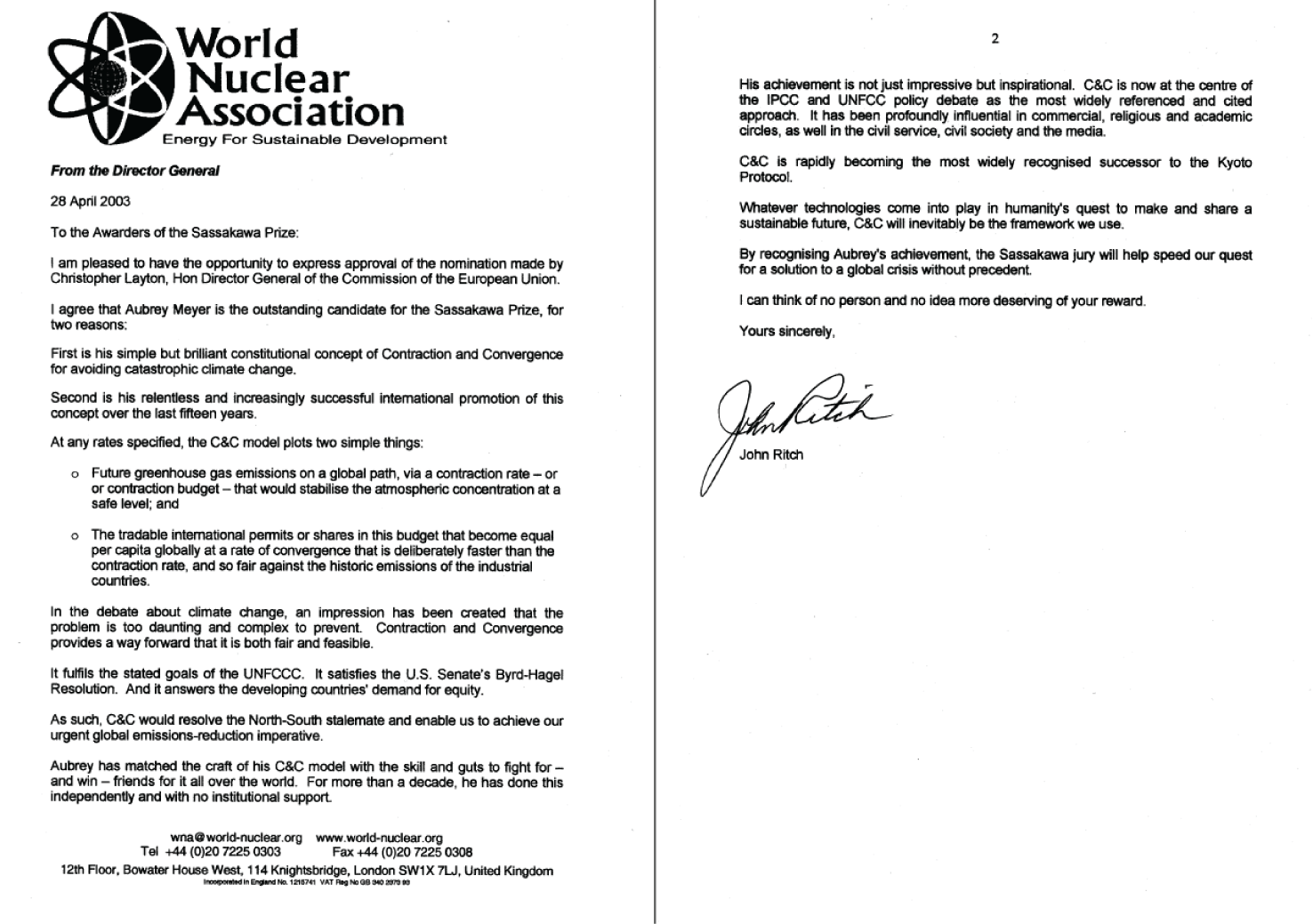 CBAT
CBAT NEWS
NEWS
28 February 2014 - Breaking the Ice How the Arctic 350 revitalized activism - Great Story here from Lucy Purdy of Positive NewsWhen Greenpeace activists were detained in Russia following a peaceful protest in the Arctic Sea, their plight drew the world’s attention.
Lucy Purdy explores how their ordeal galvanised campaigners and may have ushered in a new era for environmental activism. More26 February 2014 - One Planet Living Report adopts C&C approach.
One planet living. The case for Sustainable Consumption and Production in the Post-2015 development agendaThe report One Planet Living – The case for Sustainable Consumption and Production in the Post-2015 development agenda, a collaboration between Beyond 2015, Bond for International Development, and BioRegional, argues that sustainable consumption and production need to be included in the post-2015 development agenda that will succeed the Millennium Development Goals.It proposes that each nation take stock of how much they are consuming per capita and compare it with how much they should be consuming for a sustainable, equitable global per capita share. Under this ‘contraction and convergence’ approach, the developed nations would have a target by which to reduce their consumption and emissions, and developing nations would still have some space in which to grow.
26 February 2014 - Extended C&C interview with Michael Hutchinson of the Climate Consent Foundation on Podomatic21 February 2014 - "10 Reasons why C&C is still most prefereable farmework for allocating targets." Climate Ethics Don BrownI. Introduction
Perhaps the most challenging policy issue raised by climate change is how to fairly allocate responsibility among nations, regions, states, organizations, and individuals to reduce global greenhouse gas (ghg) emissions to non-dangerous levels. This problem is generally referred to as the problem of “equity” in the climate change regime. It a central issue in climate change policy formation because each government policy on reducing the threat of climate change is implicitly a position on that government’s fair share of safe global emissions. In addition, climate change will continue to get worse unless each country reduces its emissions to its fair share of safe global emissions. Therefore, “equity” is not only a challenging issue in forming climate policies, it is perhaps the most critical policy question facing the international community.
This article identifies 10 reasons why the equity framework known as “contraction and convergence” (C&C) is the most preferable of all the equity frameworks under serious discussion around the world. The end of this paper will acknowledge some occasionally asserted limitations of C&C yet explain why these limitations should be dealt with in one of several possible ways while adopting the C&C framework internationally.
continued . . .
10 Reasons Why “Contraction and Convergence” Is Still The Most Preferrable Equity Framework for Allocating National GHG TargetsSee more
21 February 2014 - "C&C satisfies 4 principles: - precautionary, polluter pays, equity, sustainable development." Sir John Houghton.
RCEP pointed out the urgent need for an adequate mechanism for negotiating each country's emission target and advocated a globally implemented plan known as "contraction and convergence". The energy white paper published earlier this year accepted the royal commission's 60% reduction target, but it is disturbing that it provided no clarity on UK policy regarding the framework for international negotiation.
Any successful international negotiation for reducing emissions must be based on four principles: the precautionary principle, the principle of sustainable development, the polluter-pays principle and the principle of equity. The strength of "contraction and convergence" is that it satisfies all these principles. But it also means facing up to some difficult questions.
First, world leaders have to agree on a target for the stabilisation of greenhouse gases in the atmosphere at a sufficiently low level to stave off dangerous climate change. Second, this target, and the global greenhouse gas budget it implies, has to form the framework for an equitable global distribution of emissions permits, assigned to different countries on a per-capita basis. Countries with the largest populations will therefore get the most permits, but for the sake of efficiency and to achieve economic convergence these permits will need to be internationally tradable.
This is the only solution likely to be acceptable to most of the developing world, which unlike us has not had the benefit of over a century of fossil fuel-driven economic prosperity. And it also meets one of the key demands of the United States, that developing countries should not be excluded from emissions targets, as they currently are under the Kyoto protocol.
Sir John Hougton former Chair IPCC Working Group One
19 February 2014 - Awesome sunrise over east coast Australia18 February 2014 - "The biggest story of our time and the time to tell it." James Cameron, Climate Change the Movie18 February 2014 - "New ways? C&C, the best known option." Introduction to International Environmental Law Timo Koivurova
New ways of containing climate change
Could new ways be found to contain and resolve climate change? From the political-legal angle the best known option is the so-called Contraction and Convergence model presented by the Global Commons Institute.
The basic idea is that states should first agree what constitutes safe levels of greenhouse gases. Once this is settled, emission rights are divided between states according to what their per capita emissions are. This would mean that developing countries with their low per capita emissions would receive high emissions rights. This in turn results in convergence: as the developing nations would receive much higher emissions rights they would be able to develop economically, but at the same time their per capita greenhouse emissions would increase and they would have to start limiting their emissions. Meanwhile the industrialised nations would receive much lower emissions rights and would therefore be under pressure to reduce their per capita emissions from the outset. Sooner or later, the per capita emissions rights of states would reach the same level globally and the total emissions would remain below the agreed safe levels.
Introduction to International Environmental Law
Timo Koivurova17 February 2014 - How much do we need to cut emissions globally to have 'Some Chance' 'Poor Chance' 'No Chance'.17 February 2014 - "C&C a way of breaking the climate impasse" Routledge Handbook International Environmental Law
One solution to the impasse in the climate change negotiations is a reinvigorated conception of common but differentiated responsibility that imposes differential mitigation obligations on all nations based on historic responsibility, vulnerability, and capacity to reduce GHG emissions.Popularly known as Contraction and Convergence this approach would cap and reduce greenhouse gas emissions by allocating emissions entitlements to each nation based on the above criteria with the ultimate goal of having Northern and Southern per capita emissions converge. Excluding the global South from mandatory emissions caps is fundamentally unjust because it equates countries such as India and China (with their significant and growing emissions) with Sudan and Tuvalu (with their minimal emissions, limited capacity, and significant vulnerability) and guarantees gridlock in the climate negotiations as the planet teeters on the brink of catastrophe.
The Contraction and Convergence approach to climate change will promote environmental justice by scaling back the North's overconsumption of the planet’s resources so that the South will be able to improve living standards - instead of simply grand-fathering the global North's emissions based on the climate regime’s 1990 baseline. Foregrounding justice in the climate change negotiations can also produce a new model of economic development that reduces GHG emissions, improves the well-being of the world's poor.
Routledge Handbook of International Environmental Law
Shawkat Alam, Jahid Hossain Bhuiyan17 February 2013 - "C&C Principle underpins Stern's approach." Utopia as Method Ruth Levitas
The questions of sustainability arid equality are linked in the idea of Contraction and Convergence. This principle underpins Stern's approach amid international agreements about the progressive reduction of carbon emissions. It derives from Aubrey Meyer, environmental campaigner, founder of the Global Commons Institute and musician.Meyer begins by reflecting that 'both writing and playing music are largely about wholeness and principled distribution of "effort" or practice. Responding to the climate challenge seems much like writing or playing music, where balance on the axes of reason and feeling, time and space, can only come from internal consistency'. 'Perhaps', he says, 'all life aspires to the condition of music'.
For Meyer and Stern, Contraction and Convergence apply only to national per capita levels of carbon emissions, but the approach can be widened to include other scarce resources and inequalities within nation states.
CONVERGE, an international research project dedicated to managing the earth's resources more fairly and effecting a transition to a sustainable future, applies the same principle to the 'sustainability of trade, economics, society, the runural environment, energy, food, governance, wellbeing and consciousness'.
CONVERGE seeks processes leading to convergence or contraction, whether they begin with individuals, civil society, economy or state. It involves 'a critical examination of contraction policies in the light of fairness and critical examination of fairness policies in the light of reducing our impact on naturer,' Fairness has a quite different political purpose than for Hutton and is closer to Morris's idea of equality of condition.
CONVERGE recognizes that equal inputs do not necessarily result in equal outputs: 'fairness, equity., equality and justice reside in the provision of services to each and every one of us — services of habitat, food., community, well-being, energy, materials, governance, trade and wealth. We can seek fairness not in equal shares or quotas of physical resources but in equal outcomes from the use of differing amounts of materials and energy as appropriate to local context.
Utopia as Method
Ruth Levitas14 February 2014 - "C&C supported by a range of Governments Political Parties & organizations." Carbon Primer Simon Foxell
Contraction and Convergence (C&C) A proposal initiated by the Global Commons Institute that provides a framework for reducing global GHGs to a safe concentration level (Contraction) and to a level that is equal per capita for all countries (Convergence). C&C is supported by a range of Governments, political parties and organizations including the RIBA.
A Carbon Primer for the Built Environment
Simon Foxell13 February 2013 - Several independent C&C and CBAT-related web-logs have emerged at . . . .Several independent C&C and CBAT-related web-logs have emerged as follows: -
13 February 2014 - "For simplicity, in all scenarios Emissions are decided according to the C&C Principle" CIRED13 February 2014 - C&C "The only means; we need to put this principle into action as early as possible." R Pachauri IPCC Chair AR5The interview with IPCC Chairman Pachauri comes at the end of this 10 minute C&C Campaign movie.
13 February 2014 - "Scientists Announce Nuclear Fusion Breakthrough" - Wall Street JournalPublished on 12 Feb 2014
Scientists have shown how a fusion reaction can extract more fuel from nuclear material than was put into it, a key step towards hope of harnessing the power of the stars to provide cheap, bountiful energy. But, says Gautam Naik, big challenges lie ahead.
12 February 2014 - "Why Texas [says] it will survive the collapse of the World Economy." Secession; but look at its GHG emissions.12 February 2013 - "Viable, Deliverable - I am extremely persuaded." Jon Snow of Channel 4 TV news on the effectiveness of C&C12 February 2014 - C&C "Ethically acceptable with convergence by 2020" Climate Change Justice & Sustainability Edenhofer et al
Climate Change Justice & Sustainability Edenhofer et al
"The only ethically acceptable reason for a transition period from status quo to equal per capita allocation could be the protection of socio-economic systems in industrialised countries in order to secure basic needs fulfilment and sufficient opportunities. To achieve this Contraction and Convergence [C&C], 2020 as convergence year should be adequate,”as the GCI source quoted suggests: -
From "Contraction and Convergence" The Global Solutionto a Global Problem, A Meyer
12 February 2014 - "C&C must be applied generally." Herman Daly et al Building a Sustainable Desirable Economy in Nature
A lasting prosperity requires a much closer attention to the ecological limits of economic activity. Identifying and imposing strict resource and emission caps is vital for a sustainable economy. The Contraction and Convergence model developed for climate- related emissions should be
applied more generally. Declining caps on throughput should be established for all nonrenewable resources. Sustainable yields should be identified for renewable resources. Limits should be established for per capita emissions and wastes. Effective mechanisms for imposing
caps on these material flows should be set in place. Once established, these limits need to be built into the macro-economic frameworks.12 February 2014 - "C&C the leading model for distributing emissions rights." Notre Dame Journal of Law, Ethics & Public Policy
The leading model for distributing emissions rights between nations on a per-capita basis is the proposed international framework called "Contraction and Convergence."50 Formulated in the U.K. by the Global Commons Institute, it is really a more advanced version of the per-capita formula I described previously, and therefore has my full support.It recognizes that because the emissions cuts required by developed nations are so deep, convergence to per-capita emissions rights is only possible over time. Between the post-Kyoto start year (2013), and the convergence year (e.g., 2040), the emission quotas for all nations would contract (or increase) in a linear fashion. From the convergence year onwards, the emissions of all nations would contract on a per-capita basis. 5'
This model is gaining support from scientists, businessmen, politicians, and faith groups such as the Anglican Church (U.K.), Christian Aid, and Tearfund. 52 At Oxford University in the U.K., university students have initiated the Climate Justice Project to campaign for this solution. Their website 53 explains how the model works. Contraction and Convergence is a means of setting targets for nations, but it is still dependent on national governments choosing one of the three main mechanisms below to reduce their own emissions.
2-3-2014 Shaping a Sustainable World - Alan Marshall
Notre Dame Journal of Law, Ethics and Public Policy12 February 2014 - "Do the Maths"; CBAT modelling of the 4 key heads of argument for UNFCCC compliance nears completion08 February 2014 - "The best climate speech Dave Cameron never gave." So Dave Hampton gave it for him.Dear People of Britain –
It is with heavy heart that I speak to you today. The British Isles are under attack. We have no foreigners to blame, no scapegoat, no opposition. Our attacker is extreme weather, and it is here to stay, for generations.
Many saw this coming; indeed the first warnings were fifty years ago. And I should like to offer an apology, as one of the many consecutive Prime Ministers who, over that period, felt we had to turn a blind eye, deny all reality, and instead speak to the more pressing ‘urgent’ (but ultimately, on a dead planet, unimportant) issues of the day, like “retail sales data” or “talking up the housing market (bubble)”. Prime Minsters and their advisers have, until now, mistaken the ‘urgent’ for the ‘important’. We ignored the latter. All I can do now is apologise. And speak today about what is important.
As you well know, I chaired a COBRA meeting yesterday, about the floods and storm damage. The normal pattern of parliamentary events (normal over the last half century) would be to issue a press release stating, very firmly, that Your Government is taking Immediate Action to ensure that the (perfectly predictable) tragedies you see on your televisions can “Never ever happen again”. In turn, you the people pretend to have short memories, and we move on. But we all know this old approach fools no one – and is utterly broken. The truth is that extreme weather events will happen again, and again, with devastating regularity, severity, ferocity even. This much we know.
It is hard, as your PM, to say this to you, but:- I . am . powerless . to . stop . this . We could have prepared much better for these times. But we are where we are.
There are two things any PM could do now. One can be done in secret, without your support or participation. And already is, I am ashamed to confess. That is the deployment of state or private wealth, at the level of the individual or gated community, to try to buttress ourselves from the worst. At National scale we can establish “Fortress Britain” which probably sounds an attractive option to many of you. But sadly there is more bad news. There is no fund large enough to provide for inclusion of 63 million of you.
The truth is that hard decisions will have to be taken (already are being taken), behind closed doors, to ‘write off’ some parts of the previously-United Kingdom. It will become more and more obvious to you that ‘your’ government is presiding over a Divided Britain. Where a few percent of you are gated, protected, and nurtured. (A bit like ‘Westminster village’ may appear on TV.) And the rest of you? Left to rot.
I simply cannot continue in that role. When I wrote this speech I wondered if I would be escorted from the stage at this point, and the plugs pulled on the BBC cameras, but it appears I have another minute or so… to I shall continue… to speak from the heart…
I can’t continue to lead a Britain for the few. Not just because it would be wrong and unfair, though perhaps that is reason enough, but because ultimately it would fail. No fortress wall could ever be built strong enough.
In our hearts we know – as humans – the truth that all ‘beings’ are interconnected. Watching people or animals die – outside – would kill us – inside, metaphorically and literally. No thanks.
And here is the hardest thing for you to hear: I invite you to wake, and open your hearts and eyes to the reality that ‘Fortress Britain’- for a wealthy few, is not just a **future** possibility, it is already here. It is the Britain we have gotten used to, these last 50 years. Watching poorer communities drown, starve, bake or otherwise go under. We are the rich 1 percent, globally. Being aware of this sets us free. So what is to be done?
If you wish me to continue as your PM – here is what I will do. I will start to refocus all of our famous British ingenuity, creativity, resilience and effort towards realising how – all of us – that’s 7 billion of us – can live a decent life in ecological balance with our beautiful home planet. I would of course work with other heads of state on this.
This may lead to considerably less ‘luxury’ at home for all of us, right now, but how much is enough; food and clean water on the table; a roof over our heads? That is achievable for us all. Imagine the prospect of participating in a decade or two of a great effort – in order to re-establish a working basis for productive ecological livelihoods – on this fertile planet – that can be sustained ever more. What a brave legacy that could be, for all who follow us.
I would work to immediately secure a global climate peace deal – acceptance of fair, binding and radical targets, for the phase out of all forms of pollution. All this can be agreed tomorrow, without one more day of dither and delay. This fossil fuelled delusion ends here. And a bright green future starts. (Yet we can’t be sure what it will look like.)
We can build a pathway into the future for our grandkids: we can build a bridge – to a future world – for all children, of all species, of all nations, for all time. Can we build it? Of course we can. We are a proud nation of Bob The Builder’s.
Many of us will not live to see the fruits of our labours, but we can set sail; with new resolve and determination, and address all the upstream causes of our major “falling-out” with the Mother of all Nature, the Earth that we ultimately – and utterly – depend upon. This is like building the foundations – of a new whole-Earth “Cathedral”. It may take generations to build. But it will be worth it. Imagine the pride when it is finished.
We can re-establish how we live, interconnected with one another, even the poorest, and with Nature once again. There’s no alternative. Not a living one, at least.
So today I ask – will you back me in this – or sack me. Will you demand that I start to address the upstream causes of the many and various unfolding collapsing flooding consequences of our divided kingdom – and phoney civilisation - or will you kick me out of your fortress, and spend your savings building a wall, higher still, the same wall that will divide you from your own survival?
Listen to your heart. I did. It wrote this speech for me. All by itself; maybe it speaks to you. Thank you.
08 February 2014 - "C&C - best known rights-based approach." Human Rights & Climate Change Stephen Humphreys
"The best known rights-based approach to climate change mitigation is the 'contraction-and-convergence' (C&C) framework presented by the Global Commons Institute (GCI) at the second Conference of the Parties to the UNFCCC in 1996. The idea, very briefly, was to articulate a longterm mitigation strategy that, while reducing the overall amount of GHG in use over time, would also lend toward equalising GHG emissions per person on a global scale. In such a regime, as overall global emissions dropped, the fall would be more precipitate in wealthy countries, while usage in poorer countries would continue to rise for a period in line with their greater development needs - toward convergence between rich and poor countries at some point in the future.Initially GCI abjured the term ' rights' in reference to C&C, because they regarded the atmosphere as a global commons that 'cannot be appropriated by any state or person. Today, however, GCI claims that C&C 'establishes a constitutional, global-equal-rights-based framework for the arrest of greenhouse gas emissions. This new formulation appears to be in line with a general shift toward the language of rights in the climate change arena. Whereas the 'rights' at issue in models such as C&C amount to speculative universal 'rights to emit' GHGs, with no obvious basis in human rights law, they might be framed as deriving from the 'right to development', which is mentioned somewhat obliquely in the UNFCCC. Such a derivation would depend on demonstrating that 'subsistence emissions' were in fact required to achieve basic human rights, a claim that is at least plausible.
The right to development is a difficult and somewhat confusing notion. In international law, it has had, since 1986, declaratory (non-binding) status, and has been a subject of protracted and sometimes polarising discussion within the United Nations. But whatever its doctrinal status, discussion of the right to development has evolved with time, albeit rather as a space for negotiating the differing interests of different parties in the international system rather than as law in the ordinary sense. For many, particularly in countries most vulnerable to climate change, it still provides a natural hook for assessing the rights implications of climate change and the policy premises that should underlie solutions."
Human Rights and Climate Change
Stephen Humphreys07 February 2014 - CBAT Domain Four 'Damages' "Damage Footprint' potentially huge if Budget and Sensitivity are high."07 February 2014 - C&C "A new visionary concept for Sustainable Globalisation in the 21st century." 'CONVERGE Bristol Uni et alContraction & Convergence is the principle whereby everyone has the right to emit an equal per capita share of greenhouse gases. If safe or acceptable levels are estimated, then each country’s pathway to an equitable allocation can be defined, and the world can begin to reduce emissions overall. C&C provides a framework for a smooth transition to a low level of greenhouse gas emissions from anthropogenic activity. It was a concept underpinning the UN Framework Convention for Climate Change.
We are studying the extent to which the concept of C&C and its political applications could embrace the sustainability of trade, economics, society, the natural environment, energy, food, governance, wellbeing and consciousness.
University of Bristol (UK)
Schumacher Institute for Sustainable Systems (UK)
University of Lund (Sweden)
The Natural Step International (Sweden)
University of St. Istvan (Hungary)
GreenDependent Institute (Hungary)
University of Iceland
Social Change And Development [SCAD] (India)07 February 2014 - CBAT Domain Three 'Conversion' (Renewables replace C&C constrained Fossil Fuel Dependence).07 February 2014 - "The Social Construction of Climate Change" Associate Professor Mary Pettenger Western Oregon University
Another echo is to be found in 1995 in the controversy over economic dimensions in chapter 6 in the IPCC's second assessment report (SAR). The chapter was originally drafted as a comprehensive overview of climate change damages. Pearce's model (Pearce et al 1996) included differential values for lives in North and South to calculate global cost/benefit analysis of emissions abatement. CJ:ESIN ( 1995) reports that early drafts of the chapter led to contentious debates at official presentations as well as on the ecological economics mailing list which included a formal protest endorsed by hundreds of scientists and researchers. The chapter was rejected at a meeting in Geneva and the key elements of the rewritten chapter were not included in the summary for policymakers (a key part of IPCC's assessment reports). Well-articulated objections to the chapter were raised by Masood (1995) and by Meyer (1995) and his Global Commons Institute, who out of this developed the notion of "contraction and convergence" (C&C). The C&C framework models how the trajectory of emissions would travel if we start from a status quo emissions distribution and move towards per capita equality (convergence) while reducing emissions to an overall level which is a politically set goal to achieve climate stability (contraction). It is interesting to note the range of actors who have expressed support for C&C They are able to do this precisely because the framework articulates concerns of the South for equal per capita emissions with US/Western concerns for "meaningful commitments" from developing countries.
In some sense, the "equal per capita" position poses a challenge to territoriality in that it relates individuals (as humans) to the atmosphere as a global common. It establishes individuals' equal access and responsibilities according to universal principles. However, those individual CO2 contributions are actually calculated on the basis of national emissions and then divided by the number of people living in the state. Thus, in fact it is a territorially based "per capita position" that takes the emissions of the national community and divides by the population. Hence, the low Indian per capita level depends on the large amount of poor Indians with very low emissions, while the Indian middle class consumes carbon at or close to an OECD (Organisation for Economic Co-operation and Development) average. Thus the debates around justice, while being instinctively cosmopolitan and working in ethical terms alongside the scientific constructions of climate change as "global," in fact get drawn back to a statist account of rights. In the climate negotiations, the principle of "sovereign equality" is underpinning the agreed protocols for emission reductions. This is clearly reflected in the Kyoto Protocol where all Annex I panics agreed to reduce emissions by al least 5% from 1990 levels by 2008- 2012. 1990 was decided upon as the "base year" and a "cap" was put on past emissions. Thus in the dominant version, it is Americans (or other DECO states' members) that have in effect an a priori "right" to emit CO2 at the rate they do, and any collectively agreed proposals to limit emissions need to start from that rate of emission as the point of departure. In the contex.t of the climate negotiations, allocations based on past emissions is tellingly named "grandfathering." It is the grandfathers of a political community, who through past actions, have acquired a "status quo right" for the now living to continue to use the atmosphere in the way they want. This reflects the (now palpably patriarchal) master discourse of territorial sovereignty in two ways. First, the members of the political community in question are territorially defined and, second, they are justified in the claim that the community should accept any intervention in the way they choose to live their lives. The consequence of "equal per capita emissions," when the idea is put into concrete proposals, at least proposed by state negotiators, is that the scheme becomes mediated by the Southern state's right to negotiate on behalf of "its" people through the principle of non-intervention which means that the Indian state can conceivably argue for equal per capita emissions in international politics while rejecting a right of the international community to question the distribution of emissions within India.
The Social Construction of Climate Change: Power Knowledge Norms Discourses
edited by Mary E. Pettenger01 February 2014 - One for Jim Hansen? "Global Climate Agreement must embody C&C." World Nuclear AssociationAccelerating the Nuclear Renaissance by Director John Ritch who for years has been a great fan of C&C
[similar letters here]
In sum, not one of the commonly voiced public concerns about nuclear energy poses a legitimate obstacle to the case for, or the unfolding of, a worldwide nuclear renaissance. To say this is not to express complacency. For allaying public concerns, while necessary, is not nearly sufficient to drive a nuclear renaissance that must attain global dynamism if we are to achieve a clean-energy revolution in the time required.In three distinct areas, governments must take decisive action to grow an industry that now stands - in terms of operational and technological maturity - fully primed for the major growth our environmental challenge so clearly demands.
1) Construct a Comprehensive Global Regime. The first necessity is to move beyond Kyoto to construct a truly comprehensive, long-term climate regime that yields strong political signals - and economic incentives - for a worldwide transformation to clean-energy technology. To be both effective and politically feasible, any such treaty must include all major nations, developed and developing, and must embody some variation on the principle of contraction and convergence
"Contraction" means that the agreement must produce, over a span of decades, a global reduction in greenhouse emissions on the order of 60%. "Convergence" means that the agreement must adopt - at least implicitly - the principle of equal per-capita emission rights.
The principle of equal emission rights is far from utopian:
- First, as a matter of political reality, it is the only feasible principle for a global agreement, and actually involves a concession from South to North by taking as "water under the bridge" the considerable environmental damage already done by the developed countries.
- Second, the gap between actual emissions and emissions rights provides the potential for a dynamic international trading mechanism that will promote universal efficiency in clean-energy investment while producing a large net flow of such investment from North to South.
From a Northern perspective, this economic assistance will be the most cost-effective in history if it helps to prevent the globally destructive growth in greenhouse emissions that might otherwise occur in the developing world. Even President Bush, who ran well in the competition to be the last person on Earth to recognize the reality of climate change, took a considerable step in the right direction by officially embracing two principles of enormous consequence:
- First, the importance of collective agreement on deep, long-term emissions reductions; and
- Second, the need for major aid to developing nations for clean energy investment.
Although President Obama has shown a far great propensity to pursue a comprehensive regime, the task of reconciling national interests within a major multinational treaty remains daunting. But the very act of seeking such a regime - or even of seeking widespread agreement that major greenhouse emitters will take parallel unilateral steps to achieve deep reductions - can send powerful policy signals to national parliaments and powerful investment signals to the energy marketplace. Both nationally legislated policies and widespread investment decisions will in themselves constitute considerable progress, and can pave the way politically for a multinational clean-energy accord that would build on that progress.
See more
Follow @aubreygci Tweet
UNFCCC C&C Submission - Support for Submission



